Hunger in America may be a hidden problem, but it is not a new problem. According to Feeding America, a network of 200 food banks and 60,000 pantries across the US, an estimated 42 million or 1 in 8 Americans face food insecurity in 2021. 13 million of those are children. Black, Latino and Native American populations bear a disproportionate share of the food insecurity burden in the US.
Adding another layer of complexity to food insecurity, a 2018 study by a team of researchers from Northwestern University’s Feinberg School of Medicine found that Black and Hispanic children are at greater risk for food allergies than non-Hispanic white children.
Imagine not being certain if you’d have enough food to feed your family this week and you relied on food pantries to see you through. Then imagine what it would be like if you not only needed food, but the food** you needed had to be allergen-free or gluten free — food that’s not typically stocked at food pantries, that’s usually more expensive to buy. Imagine despair…
“A person who sees a problem is a human being; a person who finds a solution is visionary; the person who goes out and does something about it is an entrepreneur.”
—Unknown
Meet Emily Brown, CEO and Founder of the Food Equality Initiative (FEI). Allergy Force recently had a chance to speak with her and learn more about her work.
Emily founded FEI in 2014 to address the food insecurity of families in need who manage food allergies and/or celiac disease. The organization’s mission is to increase access to allergen-friendly and gluten free foods for these families. FEI is one of only 4 organizations (out of the 60,000 food pantries) in the US that consistently procures specialized foods for food insecure families with restricted diets.
“If you want something done you ask a busy person.”
Emily is a wife, mom, daughter, sister, aunt. While her day job is running and building FEI, she’s also mom to two daughters (ages 7 and 9) who have severe food allergies and EoE. Somehow, she manages to find time to speak at national conferences, volunteer on a host of community boards, and, as a classically trained mezzo soprano, sing in her community choir (when she’s not living through a pandemic.)
Family-centered? Community-oriented? Civically-engaged? Yes. All of the above. That’s Emily Brown. She admits, “I’m definitely a busy person, but I’m teaching my girls how to balance a complicated life, that you can wear a lot of hats, that you can pick and choose.”
Emily grew up in a middle-class family in Dallas. She did not grow up with or around food allergies. It wasn’t until she taught preschool that she encountered kids with food allergies, at least one in her classroom each year.
In 2012 Emily joined the food allergy mom ‘club’, just after her oldest celebrated her first birthday. Emily had introduced a new food to her daughter — peanut butter. With the first bite hives appeared and her daughter’s face began to swell. She called her pediatrician and he advised Benadryl. Thankfully, she had it on hand and a dose stopped the reaction. Follow-up testing confirmed allergies to many foods.
“A perfect storm of need…”
Emily’s childcare ‘Plan A’ when she returned to teaching at her preschool had been to bring her daughter to work. But, given the number and severity of her daughter’s food allergies, the school nixed the plan. There was no ‘Plan B’. Emily was forced to resign. Her husband, a social worker, had not had a pay raise in six years. With the loss of Emily’s teaching income, the need to seek specialized healthcare, and the need to buy more expensive allergen-friendly foods, their financial situation became precarious.
2013 was a tough year. Beyond losing her job and facing food insecurity for the first time in her life, Emily lost her mom. Her second daughter was born that year with eczema and such severe reflux that she required specialized medical care and was failing to thrive.
To make ends meet, her husband asked her to enroll in WIC, a supplemental nutrition program for women, infants, and children. When Emily spoke with WIC, they referred her to a local food bank. She stood in line for hours waiting for her turn. She watched people exit with loaded bags of food. When it was finally her turn, the only safe foods for her family were 2 potatoes and a jar of salsa. When she asked the pantry manager if they had non-dairy milk, the woman shrugged, “well you got something.”
It’s a tenuous existence when a pantry can’t supply allergen-friendly alternatives to staples like Mac & Cheese and peanut butter, and you can’t afford the alternatives. “A can of beans isn’t a replacement for peanut butter, despite what nutritional labelling says.” Emily thought to herself, “I can’t be the only one struggling like this.”
The Food Equality Initiative was born out of Emily’s lived experience, out of her family’s perfect storm of need.
“Change happens at the local level in our communities, one day at a time.”
Emily scoured research to try and understand what academics were saying about what she was living. “Does anyone study this?” she wondered. There was virtually no data on the demographic distribution of food allergy, or literature on the impact of food allergies on families in need. She knew it would be hard to gain policy maker support to make systemic changes without data.
She worked to build a coalition around WIC to fill the hole. At some point she realized it took 20 years for WIC to add soy milk to the program and the offering was only reviewed every 10 years. She thought, “I can’t wait for the federal government. I have to do something.”
She decided to start a direct services approach and began building long term partnerships with researchers for data that could eventually drive policy changes.
“When food avoidance is the standard of care, delivering medically required food is the treatment — we meet an unmet medical need.”
Emily opened the first allergen-friendly, gluten-free pantry in Kansas City in April 2015. She used a ‘pantry within a pantry’ approach and negotiated training and support for pantry staff and volunteers. She developed relationships with brands that would allow them to purchase allergen-friendly foods at the lowest prices and built relationships with hospitals to refer people.
Over time she was able to open several more embedded allergen-friendly pantries, always trying to figure out the best way to serve families. They tested vouchers for in-store product redemption. They tested online ordering for delivery.
The online ordering model held the most promise. “It was hard to scale our ‘pantry within a pantry’ model to serve clients outside the Kansas City region,” she reflects, adding that “ in an odd way, Covid was a bit of a blessing in disguise.” The pandemic accelerated FEI’s move to a direct door-to-door model that’s fully scalable. FEI families can now order food at an online marketplace that’s delivered via UPS. With online ordering, FEI has significantly expanded their capacity to serve clients outside of the Kansas City area.
“I have experienced hunger personally and know the despair of not being able to access the food you need to make the hunger go away.”
FEI operates with 5 employees and a host of volunteers who serve on committees. The numbers of families helped ebb and flow — Dad gets a promotion and suddenly they don’t need services anymore; Mom loses her job and now they do.
FEI is a supplemental program, not an emergency program. FEI helps approximately 150 to 185 families each month who receive a $155 credit to shop. Their cart items are delivered direct to their door. In the last 12 months, FEI has distributed almost 121,000 items.
“It’s unfortunate that we measure impact by number of items delivered or number of people served,” explains Emily. According to Emily, the numbers don’t reflect the quality-of-life impact on people who are able to choose the fresh and dry goods they want versus pantries that give out pre-packaged boxes with mostly canned goods and repackaged bulk items that may be cross contaminated.
FEI now has a national wait list since it can ship food across the country. Sometimes, however, their hands are tied by donor restrictions on who and where FEI can help. The budget has to grow for FEI to serve more people in more locations.
When she looks back and sees how far FEI has come and how they’ve overcome barriers, Emily is proud. “But it’s not enough,” she says.
“We’re serving 1% of the estimated need and we need to continue to speak up on behalf of others who cannot be heard.”
FEI could use your help to continue to broaden their reach and impact. Here is their wish list:
1) Please donate.
Contribute what you can. Just a $10 donation will provide allergen-free food for a day for a person managing food allergies. Your donations will help FEI shrink their waitlist and expand the number of people they can serve.
2) Please volunteer.
A gift of your time and expertise is invaluable. Please contribute your time to help us help others. It takes everyone working together to move the needle and make communities better. With our ability to connect remotely today, where you live no longer limits where and how you can volunteer, who you can help.
3) Please continue to have conversations about food allergies and food insecurity.
Get educated and then help raise awareness of the problem. Know you are doing good by speaking up, speaking out, and educating others.
Emily credits FEI’s mission success so far with the fact that they “wouldn’t give up…” But the work has not been easy. The families they serve are grateful and kind. Emily never forgets that she’s “been in their shoes.”
Thank you Emily Brown for seeing the need and working to finding solutions with the Food Equality Initiative. You are a changemaker for good in the truest sense.
“You can balance a complicated life. You can wear lots of hats, and pick and choose where you make a difference.”
—Emily Brown
**A recent article from the Food Equality Initiative compared the cost of basic food items to their allergen-friendly alternatives. As an example, they found that a half-gallon of oat milk costs 2 times more than a half-gallon of cow’s milk. An ounce of sunflower seed butter is three and a half times more expensive than an ounce of store branded peanut butter.
For food allergies, the medical standard of care is strict avoidance of all allergenic foods. So to avoid life threatening allergic reactions, as well as to meet nutritional requirements for health and well being, food insecure children require {more expensive} allergen-free foods. Their access to these foods is a medical necessity, but not a given.
 |
The all-in-one food allergy app that empowers you to live your best life with food allergies |
| The Allergy Force Changemaker Series shines a light on movers and shakers in the food allergy community who drive change and bring positivity to the space for the entire community. | |
Image Credits: Thank you Emily Brown and the Food Equality Initiative


